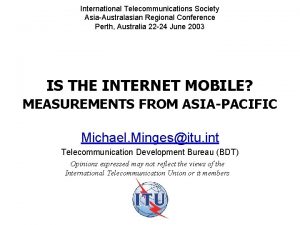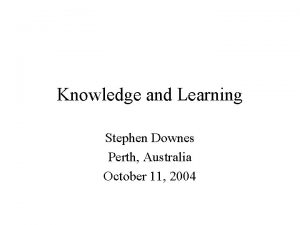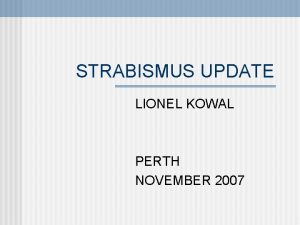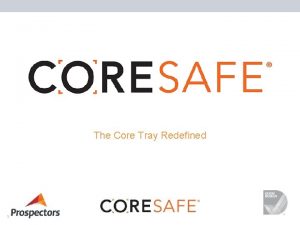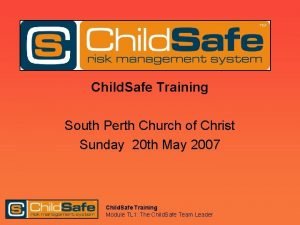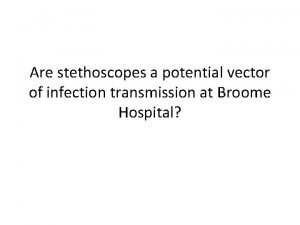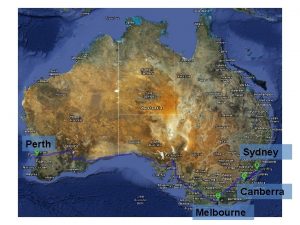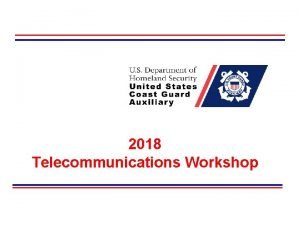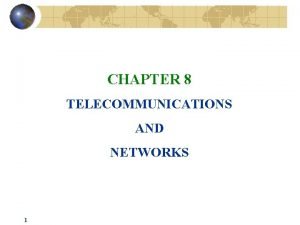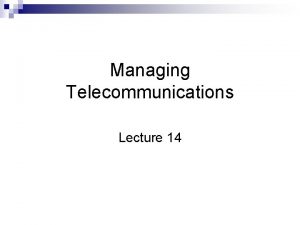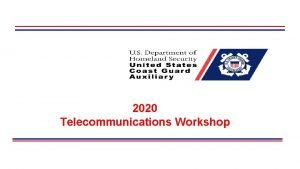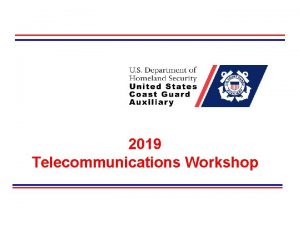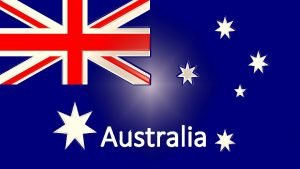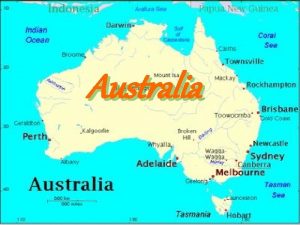International Telecommunications Society AsiaAustralasian Regional Conference Perth Australia
















- Slides: 16

International Telecommunications Society Asia-Australasian Regional Conference Perth, Australia 22 -24 June 2003 IS THE INTERNET MOBILE? MEASUREMENTS FROM ASIA-PACIFIC Michael. Minges@itu. int Telecommunication Development Bureau (BDT) Opinions expressed may not reflect the views of the International Telecommunication Union or it members

Contents • Introduction • Advanced Asia. Pacific Economies Overview • Indicators – – – Usage Users Infrastructure Pricing Revenue • Index • Recommendations Some of the data is estimated or from 3 rd parties. When data only available for one operator, it is used as a proxy for entire economy.

Why measure? • Mobile has passed fixed & Internet use growing – A logical marriage? • Non-voice mobile use growing • Commercial / regulatory / social / analytical implications Source: ITU.

What is Mobile Internet? …or accessing Internet from a mobile network? Browsing Internet from a mobile…

Overview of advanced Asia-Pacific mobile markets • Mature – Taiwan, China first economy in world to have more mobiles than people! • Mixture of technologies • Trendsetters in mobile data: – Korea (Rep. ) launched world’s first CDMA 2000 1 x 3 G network in October 2000 – Japan launched world’s first W-CDMA 3 G network in October 2001 Source: ITU.

Text messaging • Not mobile Internet • Most intensely used non -voice mobile application • Possible indicator of potential mobile Internet use – Number of messages – Penetration (i. e. , % of subscribers that use it) • Wide variation in region – Definitions? (e. g. , sent & received, ‘junk’ SMS, etc. ) Note: SMS = Short Message Service Source: ITU adapted from various reports.

Traffic: Minutes or Packets? • Measure in two ways: KTF (Korea, Rep. ), Avg. monthly minutes of use (MOU), 2002 – Time (minutes of use) – Volume (kilobytes) • Few operators publish this data Note: 2002. Data MOU is average connection to wireless data network regardless of charging system, time-based or packet-based. Source: KTF, Do. Co. Mo.

Mobile phone Internet subscribers Subscribers browsing the Internet from their mobile phone (e. g. , Wireless Access Protocol (WAP), i-mode) Mobile phone Internet subscriber s as % of total mobile subscriber s, 2002 Source: ITU adapted from various sources As % of total mobile subscriber s, August 2002 Source: ITU adapted from Nomura Research Institute & Korea Network Information Center

What is an Internet user? Mobile phone only Source: ITU adapted from Nomura Research Institute.

High-speed mobile (e. g. , GPRS, CDMA 2000 1 x, W-CDMA) • Infrastructure indicator – Subscribers to high-speed mobile data services – Coverage of high-speed mobile Internet network • Comparability issues – Not all high-speed networks same (GPRS, CDMA 2000 1 x EV/DO, W-CDMA) – Some operators count handsets rather than subscribers – A subscriber may not be using high-speed features – Subscribers may be pay as you go Source: ITU.

High-speed mobile Subscribers & Coverage Source: ITU adapted from various sources. Source: ITU adapted from Do. Co. Mo.

Mobile data revenue • Most popular metric among operators with almost all publishing • True mobile Internet use is often not separated from message revenues • May reflect high prices rather than intensity of use • Two basic indicators: – Mobile data revenue as % of total mobile revenue – Average Mobile Data Revenue Per User (ARPU) Source: ITU adapted from various sources.

Mobile pricing • Two ways of pricing: – Time (length of period logged on). Generally used for low-speed access. – Volume (amount of data transferred). Generally used for high-speed access. • Can also have a subscription plan or “pay as you go”. Source: ITU adapted from various sources.

High-speed mobile pricing 1 Megabyte (MB) is approximately equivalent to: – 250 emails (of 200 words) – 20 emails with attachments – 20 pages of spreadsheets – 10 web pages Source: Telstra Source: ITU adapted from various sources.

Mobile Internet Index • Which economy is doing best overall in mobile Internet? • Helps to overcome limitations of different data by using a number of variables • Indicators: – Mobile to Internet Ratio – SMS/sub/month – Mobile telephone Internet users ratio – High-speed mobile subscriber ratio – Mobile data revenue ratio • Mobile Internet Divide Source: ITU.

Recommendations • Agreement on standard list of mobile Internet indicators and definitions • Government ICT agencies need to collect and disseminate the data (only Hong Kong, China and Taiwan, China publish limited mobile Internet statistics) • National statistical offices should incorporate mobile Internet questions into ICT surveys • If mobile is important, then why not PDAs and notebooks? If wireless important, then why not 802. 11? So should Wi. Fi also be included as a mobile Internet indicator (e. g. , number of users, number of hotspots)?
 International telecommunications society
International telecommunications society Knowledge society perth
Knowledge society perth Internal medicine society of australia and new zealand
Internal medicine society of australia and new zealand Nacada regional conference
Nacada regional conference Squint surgery perth
Squint surgery perth Perth hub city link
Perth hub city link Core sample trays
Core sample trays Curtis lumber hoosick falls new york
Curtis lumber hoosick falls new york Construire un diagramme ombrothermique
Construire un diagramme ombrothermique South perth church of christ
South perth church of christ Climograma perth
Climograma perth Stethoscopes perth
Stethoscopes perth Perth amboy high school main campus
Perth amboy high school main campus The gap perth
The gap perth Turner career and college high school
Turner career and college high school Asic regulatory portal
Asic regulatory portal Jennmar perth
Jennmar perth
